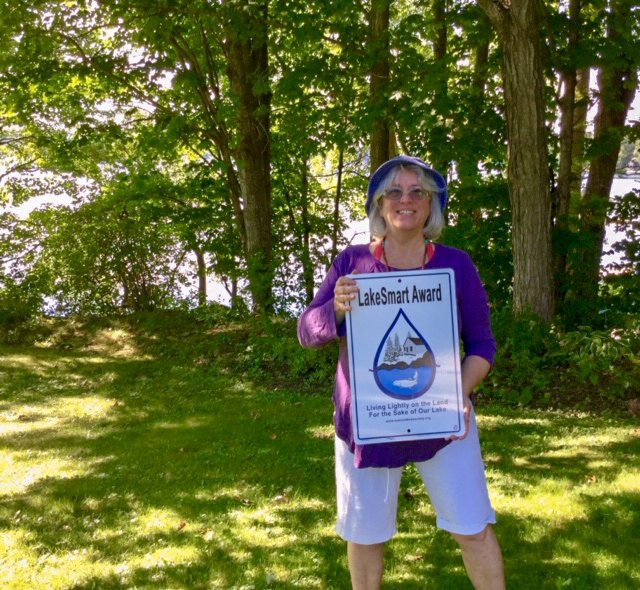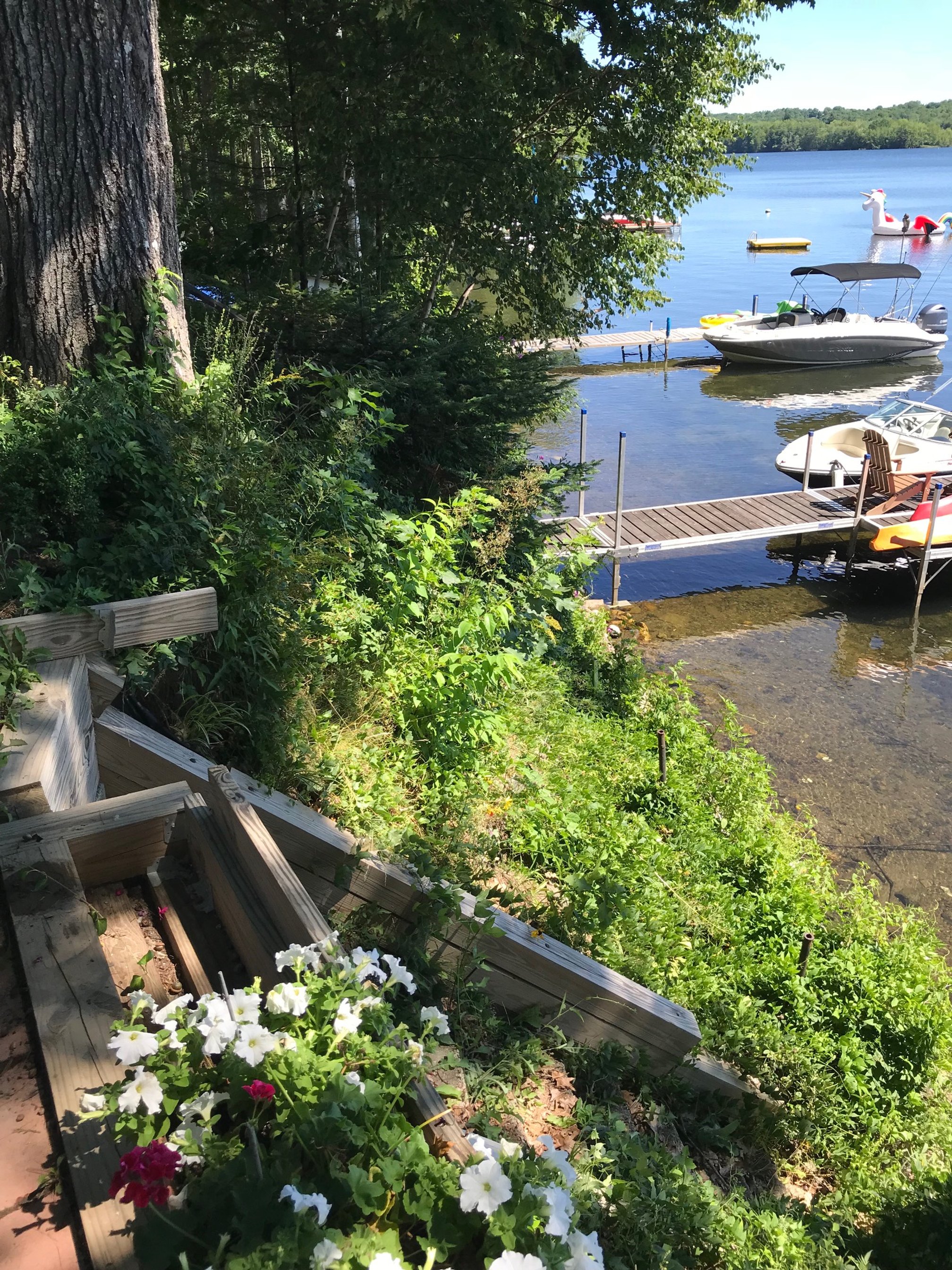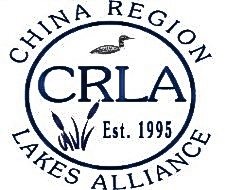
LakeSmart
Being LakeSmart preserves water quality, supports wildlife habitat and preserves property values.
Lakefront property owners know the impact of water quality on their summer experience. Not all landowners know, however, the positive impact they can have on water quality. The choices made by lakefront landowners can make a difference for the people, fish and wildlife that call our lakes home. By making landscaping choices that keep stormwater out of our waters, landowners can help combat the number one water pollutant – eroded soil, also called “non-point source pollution.” Phosphorus in soil promotes plant growth – in the lake that means algal blooms!
NEW! Check Out Lake Life Today, a series of articles that are hoped will inspire you to see how, by taking just a few steps, you can make a difference and help preserve the quality of water in our lakes for future generations.
These articles have been collected and organized by LakeSmart Director Elaine Philbrook, a member of China Region Lake Alliance (aka “the Alliance”) serving China Lake, Webber Pond, Three Mile Pond, and Three-Cornered Pond. The Alliance would like to thank our partners at Maine Lakes and Lakes Environmental Association (LEA) for information to support this article.
The CRLA partners with Maine Lakes Society and China Lake Association to deliver the LakeSmart program on China Lake
LakeSmart is an education and reward program coordinated by the Maine Lakes Society that helps lakefront homeowners make land use choices that keep pollutants out of our lakes. It is free, non-regulatory and entirely voluntary. Properties that meet LakeSmart standards receive a distinctive blue and white LakeSmart Award sign in celebration of good lake stewardship.
China Lake Association has operated a highly successful China LakeSmart program for many years. Property owners may request a trained evaluator visit the property and recommend steps to take to capture and filter stormwater in order to keep pollutants out of the lake. Participating landowners will receive a follow-up report with suggested actions to support lake water quality, such as maintaining or enhancing vegetated buffers, installing water bars or relocating pathways and installing “infiltration steps” down to the lake.













Example LakeSmart Properties
-
Glen H Easton purchased this property on Killdeer Point in 1937. He was the supervising naval officer assigned at Bath Iron works in those days. The camp was well built boasting a lovely cathedral ceiling. Bonnie Easton McGann, oldest of the 9 grandchildren, continues to share family ownership of the camp.
Of particular lake friendly buffers on the Easton Camp property are the deep natural canopy of tall trees at the lake front and the 40-foot-deep stand of hemlock trees that are kept trimmed to ensure that the Easton family can enjoy a pleasant view of the lake. Effective waterfront buffers protect our lake from harmful runoff and can allow a beautiful view of the lake.
-
The China LakeSmart Program is happy to present to the Hargadon family members the LakeSmart award. Their ownership goes back to the late 1800s when their great-grandfather, Wilmont Rufus Jones and a handful of colleagues fell in love with it. Wilmont Jones built the house that is called The Leaning Elm along with a red boathouse at the southern end of China Lake.
Five generations later ( soon to be six), south China remains their family’s touchstone. Although the families currently live in various parts of the country, they can always count on getting together at their summer home.
This family has a long history with the lake. The concern for the health of China Lake has been carried forward through the generations.
“We are thrilled at the apparent turnaround China Lake is in the midst of, and grateful for the work so many have put into it,” said Patricia Hargadon. “Our grandfather would be pleased as well.”
-
The CLA presented Scott and Katy McCormac with the LakeSmart Award in 2018. The McCormac/Conant families have enjoyed their lakefront property for 5 generations.
Their buffer is a good example of how a lakefront property owner can keep their beautiful view of the lake and still have a deep vegetative buffer to protect the lake from storm water runoff.
What is a buffer? A buffer is a sturdy strip of mixed vegetation along the lakeshore. The plants of a sturdy buffer shield the lake from rainwater runoff which otherwise would carry pollutants into the water.
-
Susan and Scott Monroe have owned their home and summered on China Lake for 14 years. They recently have moved permanently to this home on the East side of China Lake. They love being on the lake. Susan calls it her piece of heaven. With a little help from the Youth Conservation Corps, Susan and Scott received the LakeSmart award and have 2 signs to post on their property.
There are many properties that have a steep slope at their lake front. Keeping vegetation on the slope like woody shrubs and tall trees and ground cover is lake friendly and protective for the lake. In most cases, the Youth Conservation Corps can assist property owners to strengthen this area.
-
Jeanne Marquis and her 94-year-old father, Carl John Stenholm, were recipients of the LakeSmart Award for their lake property on Fire Road 1 on China Lake.
Marquis says their Maine property has been in their family since the late 1800s when her great grandfather, John Benson Doe, returned from sheep ranching out west to purchase their red brick home on the Neck Road.
China Lake continued to call this family back home for three generations just as it did for John Doe, even if it was just for the summers. Two years ago, Marquis and her father made a permanent move to their China Lake home as their year-round residence.
Marquis told us, “I am very grateful for the work the Lake Smart Program and the China Lake Association does to improve the quality of the lake and monitor the loon population. It’s encouraging to see the loons and the eagles return to this area for the generations ahead of us to enjoy.”
LakeSmart property owners maintain or enhance native vegetation in their shorefront buffers to include tall trees, short trees, shrubs and ground cover. jbrockway photo
Want to see if your property is LakeSmart? We recommend starting with the self-assessment worksheet developed by Maine Lakes Society. It provides a look at the types of things our LakeSmart evaluators consider on a property visit.
If you would like continue with the process after completing the survey, you may request a visit from our LakeSmart team.
Want to volunteer as a LakeSmart evaluator? Click through to find volunteer training opportunities from Maine Lakes.


